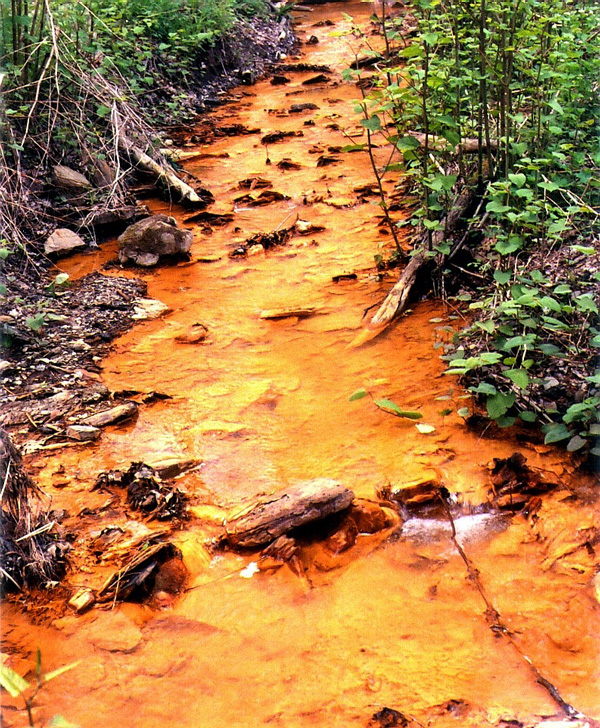Minnesotas Lax Pollution Control Meets PolyMets 500-Year Pollution Threat

Donald Trump said August 8 that if elected he would enact a moratorium on “new regulations,” claiming they destroy jobs. Trump’s hoary proposal has been protecting some mining company profits in Minnesota for decades, but in an underhanded way. Still, regulatory moratoriums are just PR slogans from polluters; even the deliberate neglect of mining pollution law by state agencies in Minnesota hasn’t saved mines from closing or kept mining jobs from being lost.
According to a petition filed with the US Environmental Protection Agency (EPA) by the non-profit group WaterLegacy, Minnesota agencies and the legislature have failed to enforce environmental laws against mining operations anywhere in the state. WaterLegacy’s (July 2, 2015) petition documents “a complete failure to comply with the Clean Water Act” in Minnesota. So bad is the state’s record, that the petition calls on the EPA to suspend the state’s authority to enforce industrial pollution permits under the Clean Water Act.
Making matters worse -- as Mordecai Specktor reports in the August 2016 issue of The Circle -- the state legislature formalized in law this de facto non-enforcement of state pollution control. In 2015, the Minnesota Pollution Control Agency (MPCA) was forced to suspend its (lax) work protecting state waters from mining runoff after the legislature passed bills that “essentially exempted taconite mining operations” from complying with the 40-year-old sulfate standard for waters with wild rice.
Documentation provided to the EPA by WaterLegacy shows Minnesota’s record of environmental enforcement to be so bad that the EPA began an investigation into the allegations. The agency recently asked the Minnesota Attorney General’s office to respond by August 12 to a list of its questions. In an Aug. 8 email to me, Paula Maccabee, advocacy director and chief counsel for WaterLegacy, said, “We consider EPA’s many letters and requests for information from Minnesota agencies to function as replies to [our] petition to remove Minnesota state agencies” from oversight of mining operations.
Interviewed by Specktor, Maccabee said the 2015 law -- that instructed the MPCA not to enforce the sulfate pollution standard -- “was the straw that broke the camel’s back.” WaterLegacy then petitioned the US Environmental Protection Agency over the State Legislature’s and the MPCA’s “failure to respect the [US] Clean Water act and to enforce laws limiting mine pollution.”
EPA is expected to prepare draft findings from its investigation later this year or early in 2017.
PolyMet’s initial pollution projections publicly admitted that acid mine drainage -- which permanently destroys surface water systems -- from its proposed sulfide mine would be a serious problem for over 500 years.
Consequently, a 500-year cleanup requirement must be applied to all future follow-on companies that will replace what’s now called “PolyMet.” Mining companies often change their name to avoid liability and clean-up requirements; it’s an age-old practice that the lawmakers wink at everywhere. PolyMet’s promises of clean copper-sulfide mining must be backed up with legally binding guarantees that it will monitor groundwater, and manage waste disposal, pollution cleanup, and land reclamation for 500 years, no matter the size, the name, or the state of incorporation of the companies that will replace PolyMet -- or the foreign country where the firm is headquartered.
Of course such a mandate has never been imposed on a mine project and would probably outright kill the sulfide mining plan. This is why the staggering 500-year pollution notice was buried by PolyMet and never appeared in the Final Environmental Impact Statement Nov. 6, 2015. Instead, the company and Dept. of Natural Resources Commissioner Tom Landwehr warned that hazardous pollution in need of monitoring and strict oversight would be needed “indefinitely.” Landwehr later gave the indefinite pollution threat a DNR green light.
The question is begged: How can PolyMet be forced to prevent pollution “indefinitely,” when the DNR and Minn. Pollution Control Agency can’t enforce mining regulations even now?
Although PolyMet claims otherwise, experts have shown that its mine’s waste water would move north into the pristine and fragile BWCA Wilderness. This admission alone is reason enough to cancel the project with an exclamation point. And as if pointing a gun at the BWCAW isn’t threatening enough, PolyMet’s own mine drainage projections show that its plume of contamination would reach the Partridge and Embarrass Rivers, which flow to the St. Louis River and Lake Superior.
Maccabee told The Circle, “WaterLegacy was formed to address the new threat of sulfide mining, which is a threat to Indian country, and a threat to the Boundary Waters, and a threat to Lake Superior.” I think the Big Lake has more defenders than there are mine proponents, but our defending needs to be broad, robust and energetic. Otherwise, in the words of musical satirist Dave Lippman, We’ll soon be living near Lake Inferior.